- You are here:
- Home »
- Oven Recipes
- » The Ultimate Guide To Nuts Oven Recipe
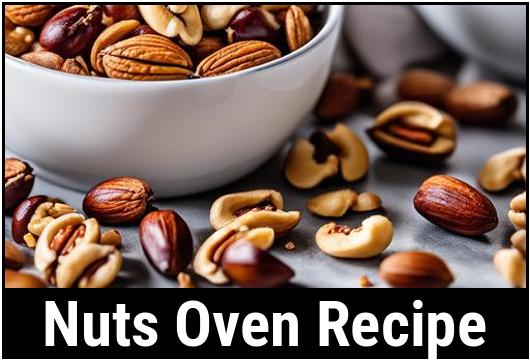
The Ultimate Guide To Nuts Oven Recipe
Nuts are not only delicious but also packed with nutrients, making them a popular snack choice for many. Whether you’re a fan of almonds, cashews, walnuts, or any other type of nut, roasting them in the oven can enhance their flavor and texture. In this comprehensive guide, we’ll delve into the art and science of cooking nuts in an oven, from selecting the best ingredients to achieving the perfect roast.
Food Science Of Cooking Nuts In An Oven
Roasting nuts in an oven is a process that involves heat and time to bring out their natural flavors and aromas while creating a satisfying crunch. The heat causes the nuts’ natural oils to release, enhancing their taste and texture. Additionally, the Maillard reaction occurs, resulting in the browning of the nuts and the development of complex flavor compounds.
It’s important to note that different types of nuts require slightly different roasting techniques due to variations in their fat content and size. For example, nuts with higher fat content, such as macadamia nuts, may roast more quickly and require closer attention to prevent burning.
Choosing Ingredients
Selecting high-quality nuts is essential for achieving the best results in your oven-roasted nut recipe. Look for nuts that are fresh, with no signs of rancidity or mold. You can choose from a variety of nuts, including almonds, pecans, pistachios, and hazelnuts, depending on your preference and recipe requirements.
When purchasing nuts, opt for unsalted varieties to have better control over the flavor and sodium content of your final dish. Additionally, consider buying raw nuts rather than pre-roasted ones, as they will allow you to customize the roasting process to your liking.
Preparing Ingredients
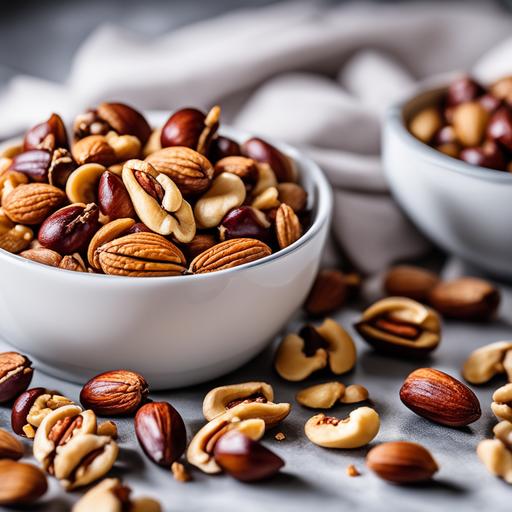
Before roasting your nuts in the oven, it’s essential to prepare them properly to ensure even cooking and optimal flavor. Here’s a step-by-step guide to preparing nuts for roasting:
- Inspect and Sort: Spread the nuts out on a clean surface and inspect them for any debris or discolored nuts. Remove any foreign particles or damaged nuts.
- Rinse (Optional): Some people prefer to rinse the nuts under cold water to remove any dust or residue. However, this step is optional and may not be necessary if the nuts are already clean.
- Dry Thoroughly: Pat the nuts dry with a clean kitchen towel or paper towels to remove excess moisture. Moisture can prevent the nuts from roasting evenly and may lead to a soggy texture.
- Season (Optional): If desired, you can season the nuts with spices, herbs, or sweeteners before roasting. Popular seasonings include cinnamon, sea salt, honey, or maple syrup. Toss the nuts with the seasonings until evenly coated.
By following these preparation steps, you’ll ensure that your nuts roast evenly and develop a delicious flavor profile.
Optimal Oven Cooking Temperature & Timing
The key to perfectly roasted nuts lies in finding the optimal balance between temperature and cooking time. Generally, nuts roast best at a moderate temperature to prevent them from burning while allowing the flavors to develop fully. Here are some guidelines for roasting nuts in the oven:
- Preheat the Oven: Before placing the nuts in the oven, preheat it to the desired temperature. A temperature range of 300°F to 350°F (150°C to 175°C) is ideal for most types of nuts.
- Spread Evenly: Arrange the prepared nuts in a single layer on a baking sheet lined with parchment paper or a silicone baking mat. Make sure the nuts are spaced evenly to allow for proper air circulation.
- Roasting Time: The roasting time will vary depending on the type and size of the nuts, as well as your desired level of roastiness. In general, nuts will take around 10 to 15 minutes to roast, but larger nuts like Brazil nuts may take longer.
- Check Frequently: Keep a close eye on the nuts as they roast, as they can quickly go from golden brown to burnt. Stir or shake the baking sheet occasionally to ensure even roasting.
By following these temperature and timing guidelines, you can achieve perfectly roasted nuts with a delightful crunch and rich flavor.
Nuts Oven Recipe
Now that you understand the science behind roasting nuts and how to prepare them, let’s explore a simple and delicious nuts oven recipe:
Ingredients
- 2 cups of raw almonds
- 1 tablespoon of olive oil
- 1 teaspoon of sea salt
- 1 teaspoon of ground cinnamon (optional)
- 1 tablespoon of honey (optional)
Instructions
- Preheat the Oven: Preheat your oven to 325°F (160°C) and line a baking sheet with parchment paper or a silicone baking mat.
- Prepare the Almonds: In a large bowl, toss the almonds with olive oil until evenly coated. If desired, add the sea salt, ground cinnamon, and honey, and toss again until the almonds are well coated with the seasonings.
- Spread on Baking Sheet: Spread the seasoned almonds in a single layer on the prepared baking sheet, ensuring that they are evenly spaced for even roasting.
- Roast in the Oven: Place the baking sheet in the preheated oven and roast the almonds for 10 to 15 minutes, or until they are golden brown and fragrant. Stir or shake the almonds occasionally to ensure even roasting.
- Cool and Serve: Once the almonds are roasted to your desired level of crunchiness, remove them from the oven and let them cool completely on the baking sheet. Once cooled, transfer the roasted almonds to an airtight container for storage or enjoy them immediately as a delicious snack.
Roasting nuts in the oven is a simple yet rewarding process that yields deliciously crunchy and flavorful results. By understanding the science behind roasting nuts, selecting high-quality ingredients, and following proper preparation and cooking techniques, you can elevate your nut-roasting game to new heights. Whether you enjoy them as a standalone snack, sprinkle them over salads or desserts, or incorporate them into your favorite recipes, oven-roasted nuts are sure to delight your taste buds and impress your guests. Experiment with different nut varieties, seasonings, and roasting times to discover your perfect combination, and enjoy the delicious rewards of homemade roasted nuts.
Doneness Checks
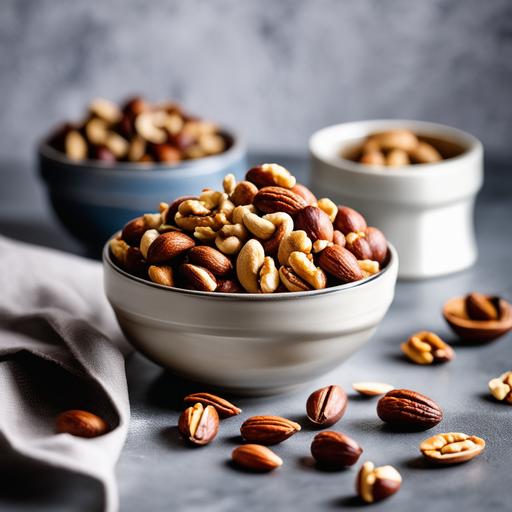
Roasting nuts in the oven is a straightforward process that requires minimal effort but yields maximum flavor. Whether you’re craving the earthy richness of almonds, the buttery goodness of cashews, or the crunchy texture of pecans, the oven is your best friend when it comes to transforming raw nuts into irresistible snacks.
To get started, gather your favorite nuts and preheat your oven to the appropriate temperature. Different nuts may require slightly different temperatures and roasting times, so it’s essential to refer to specific guidelines for each type.
Determining when your nuts are perfectly roasted is crucial to achieving the ideal flavor and texture. Here are some doneness checks to help you gauge when your nuts are ready:
Color
One of the most reliable indicators of doneness is the color of the nuts. When properly roasted, nuts should take on a golden brown hue. Keep an eye on them as they roast, and remove them from the oven as soon as they reach the desired color to prevent overcooking.
Aroma
Roasting nuts releases their natural oils and intensifies their aroma. When your kitchen is filled with a warm, nutty fragrance, it’s a good sign that your nuts are nearing perfection. Trust your sense of smell to guide you in determining when the nuts are ready to be removed from the oven.
Texture
The texture of roasted nuts should be crispy on the outside and tender on the inside. To test for doneness, take a nut out of the oven and allow it to cool slightly before biting into it. If it’s crunchy and satisfyingly crisp, your nuts are done. If they’re still chewy or soft, they may need a few more minutes in the oven.
Undercooking
While it’s better to undercook nuts slightly than to overcook them, undercooking can result in a lackluster flavor and an unsatisfying texture. Here are some common signs of undercooked nuts and how to remedy them:
Pale Color
If your nuts are still pale after roasting, they may be undercooked. Return them to the oven for an additional few minutes, keeping a close eye on them to prevent burning.
Soft Texture
Undercooked nuts may have a soft or chewy texture, rather than the desired crispness. Give them a bit more time in the oven until they achieve the perfect level of crunchiness.
Lack Of Flavor
Undercooked nuts may lack the depth of flavor that comes from proper roasting. Allowing them to roast for a bit longer will help develop their nutty aroma and taste.
Overcooking
Overcooking nuts can quickly turn them from golden perfection to burnt disappointment. Here’s how to recognize and salvage overcooked nuts:
Burnt Smell
If your kitchen is filled with a strong, burnt odor, it’s likely that your nuts have been overcooked. Remove them from the oven immediately to prevent further burning and salvage any nuts that are still salvageable.
Dark Color
Overcooked nuts will take on a dark brown or black color, indicating that they’ve been roasted for too long. While some nuts may be beyond saving, you can salvage the ones that are still palatable by removing any burnt pieces and using the remaining nuts in recipes where their charred flavor won’t be as noticeable.
Bitter Taste
Overcooked nuts may have a bitter or acrid taste due to the burnt oils and proteins. If only a few nuts are burnt, remove them and discard them to prevent their bitter flavor from affecting the rest of the batch.
Troubleshooting
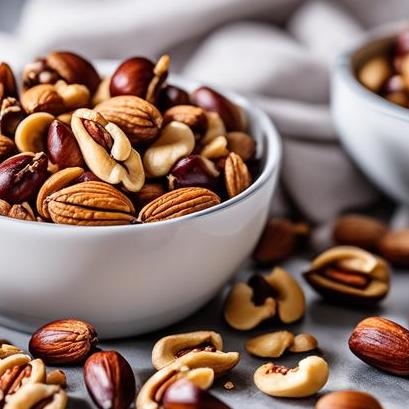
Even the most experienced cooks encounter challenges when roasting nuts in the oven. Here are some common issues you may encounter and how to troubleshoot them:
Uneven Roasting
If some nuts are roasted to perfection while others remain undercooked or burnt, it’s likely due to uneven heat distribution in your oven. To remedy this, rotate the baking sheet halfway through the roasting process to ensure that all nuts are exposed to consistent heat.
Sticking To The Pan
Nuts that stick to the baking sheet can be frustrating to remove and may end up breaking apart or losing their crunchiness. To prevent sticking, line your baking sheet with parchment paper or a silicone baking mat before adding the nuts. If nuts still stick, gently loosen them with a spatula while they’re still warm.
Too Much Oil
Adding too much oil to your nuts before roasting can result in greasy, soggy nuts rather than crispy, flavorful ones. To avoid this, use a light hand when tossing the nuts with oil, and spread them out in a single layer on the baking sheet to allow for even roasting and oil absorption.
Recipe Variations
Now that you’ve mastered the art of roasting nuts in the oven, it’s time to get creative with flavor variations. Here are some delicious recipe ideas to inspire you:
Spicy Roasted Almonds
Toss whole almonds with olive oil, smoked paprika, cayenne pepper, garlic powder, and a pinch of salt. Roast in the oven until golden brown and fragrant, then let cool before serving.
Sweet And Salty Cashews
Coat cashews in a mixture of melted butter, brown sugar, cinnamon, and salt. Roast in the oven until caramelized and crunchy, then sprinkle with flaky sea salt before serving.
Rosemary Parmesan Pecans
Combine pecan halves with melted butter, fresh rosemary, grated Parmesan cheese, and a sprinkle of salt. Roast in the oven until golden and fragrant, then let cool before enjoying.
Honey Glazed Walnuts
Drizzle walnuts with honey and a touch of olive oil, then sprinkle with cinnamon and salt. Roast in the oven until caramelized and sticky, then let cool before breaking apart and serving.
Roasting nuts in the oven is a simple yet rewarding process that yields delicious results every time. By following the tips and techniques outlined in this guide, you can achieve perfectly roasted nuts with a crisp texture and rich flavor. Whether you prefer sweet, savory, or spicy flavors, there are endless possibilities for customizing your roasted nuts to suit your taste preferences. So grab your favorite nuts, preheat your oven, and get ready to elevate your snacking game with homemade roasted nuts that are sure to impress.
Flavour Enhancement Tips
Roasting nuts in the oven is a simple yet effective way to intensify their flavor and enhance their crunchiness. The process involves spreading nuts in a single layer on a baking sheet and baking them at a specific temperature until they are golden brown and fragrant. While the basic technique is straightforward, there are various factors to consider to achieve the perfect roasted nuts, including flavor enhancement, texture enhancement, cooking temperatures, and cooking tips.
Enhancing the flavor of roasted nuts can take your recipe from good to exceptional. Here are some tips to elevate the taste of your oven-roasted nuts:
1. Seasoning
Experiment with different seasonings to add depth and complexity to your roasted nuts. Common options include salt, pepper, garlic powder, chili powder, cinnamon, cumin, and paprika. You can also try sweeteners like honey or maple syrup for a touch of sweetness.
2. Infusions
Infusing nuts with flavor before roasting can yield delicious results. Try tossing the nuts with melted butter or olive oil infused with herbs, such as rosemary or thyme, before placing them in the oven. Alternatively, you can sprinkle the nuts with citrus zest or drizzle them with balsamic glaze after roasting for an extra burst of flavor.
3. Sweeteners
For a sweet and indulgent treat, consider adding sweeteners like brown sugar, honey, or maple syrup to your roasted nuts. Coat the nuts evenly with the sweetener of your choice before roasting to create a caramelized coating that enhances their flavor and crunchiness.
Texture Enhancement Tips
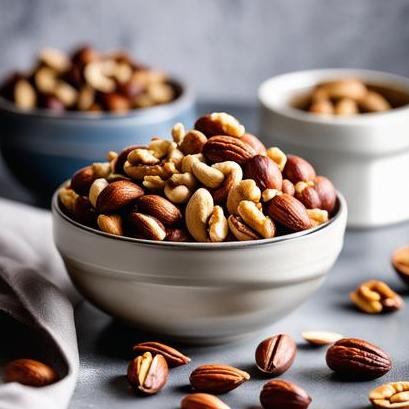
Achieving the perfect texture is essential when roasting nuts in the oven. Here are some tips to ensure your nuts are delightfully crunchy:
1. Even Spreading
Spread the nuts in a single layer on a baking sheet to ensure they roast evenly. Crowding the nuts on the pan can cause uneven cooking and result in some nuts being undercooked while others are overcooked.
2. Stirring
Stir the nuts occasionally during roasting to promote even browning and prevent them from burning. Use a spatula or wooden spoon to gently toss the nuts on the baking sheet, ensuring that they roast evenly on all sides.
3. Cooling
Allow the roasted nuts to cool completely on the baking sheet before transferring them to a storage container. Cooling allows the nuts to firm up and develop their crunchy texture fully.
Cooking At Different Temperatures
The cooking temperature plays a crucial role in the outcome of your roasted nuts. Here’s how different temperatures can affect the flavor and texture:
1. Low Temperature (250°F – 300°F)
Roasting nuts at a low temperature for a longer duration can result in a more evenly toasted and flavorful final product. This method is ideal for delicate nuts like pine nuts and pecans, as it helps prevent them from burning.
2. Moderate Temperature (325°F – 350°F)
Roasting nuts at a moderate temperature strikes a balance between browning and preserving the natural flavors of the nuts. This temperature range is suitable for most types of nuts and produces well-toasted, crunchy results.
3. High Temperature (375°F – 400°F)
Cooking nuts at a high temperature yields a quicker roasting time but requires closer attention to prevent burning. This method is best suited for robust nuts like almonds and walnuts, as it produces a deeply toasted flavor and crunchy texture.
Cooking Tips
Mastering the art of roasting nuts in the oven requires attention to detail and careful technique. Here are some additional tips to ensure success:
1. Preheat The Oven
Always preheat your oven before roasting nuts to ensure even cooking and consistent results. Allow the oven to reach the desired temperature before placing the nuts inside.
2. Use Fresh Nuts
Start with fresh, high-quality nuts for the best flavor and texture. Avoid using nuts that are stale or rancid, as they will produce inferior results.
3. Monitor Closely
Keep a close eye on the nuts while they are roasting to prevent them from burning. Nuts can go from perfectly toasted to burnt in a matter of minutes, so check them frequently and adjust the cooking time as needed.
4. Store Properly
Once roasted, store the nuts in an airtight container at room temperature for up to two weeks. For longer storage, store them in the refrigerator or freezer to maintain their freshness.
Serving Suggestions
Oven-roasted nuts are incredibly versatile and can be enjoyed in a variety of ways. Here are some serving suggestions to inspire your culinary creations:
1. Snack
Enjoy roasted nuts as a satisfying snack on their own or mixed with dried fruit for a sweet and savory treat. Pack them in individual portions for a convenient on-the-go snack.
2. Salad Topping
Sprinkle roasted nuts over salads to add crunch and flavor. They pair well with leafy greens, roasted vegetables, and tangy dressings for a delicious and nutritious meal.
3. Dessert
Incorporate roasted nuts into your favorite dessert recipes, such as cookies, brownies, and cakes, for added texture and flavor. Chop them finely and fold them into the batter or use them as a garnish on top.
4. Trail Mix
Combine roasted nuts with dried fruit, seeds, and chocolate chips to create a homemade trail mix that’s perfect for hiking, road trips, or afternoon snacking.
Conclusion
Roasting nuts in the oven is a simple yet rewarding technique that can elevate your culinary creations to new heights. By following these tips and techniques, you can achieve perfectly roasted nuts that are bursting with flavor and crunchiness. Whether you enjoy them as a snack, salad topping, or dessert ingredient, oven-roasted nuts are sure to delight your taste buds and impress your guests. Experiment with different seasonings, cooking temperatures, and serving suggestions to discover your favorite combinations and unleash your creativity in the kitchen. With a little practice and experimentation, you’ll be roasting nuts like a pro in no time!
FAQS
What Are Some Popular Types Of Nuts That Can Be Used In Oven Recipes?
There are various types of nuts that are commonly used in oven recipes, including almonds, walnuts, pecans, cashews, and hazelnuts. These nuts not only add a crunchy texture but also provide a rich and distinctive flavor to the dishes.
How Do I Roast Nuts In The Oven?
To roast nuts in the oven, start by preheating your oven to around 350°F (175°C). Spread the nuts evenly on a baking sheet and place them in the oven. Roast them for about 8-10 minutes, or until they become golden brown and fragrant. It’s important to keep a close eye on the nuts during the roasting process to avoid burning.
Can I Add Spices Or Seasonings To My Oven-roasted Nuts?
Absolutely! Adding spices or seasonings to your oven-roasted nuts can enhance their flavor profile. Popular options include cinnamon, cayenne pepper, paprika, garlic powder, and even a sprinkle of sea salt. Experimenting with different combinations can result in delicious and unique flavor profiles.
Are There Any Health Benefits Associated With Consuming Oven-roasted Nuts?
Yes, oven-roasted nuts offer several health benefits. They are packed with nutrients like healthy fats, protein, fiber, vitamins, and minerals. Consuming nuts in moderation has been linked to improving heart health, reducing the risk of certain diseases, supporting brain function, and aiding in weight management.
How Can I Store Oven-roasted Nuts To Keep Them Fresh And Crunchy?
To ensure the freshness and crunchiness of oven-roasted nuts, it’s important to store them properly. Once they have cooled down completely, transfer them to an airtight container or a resealable plastic bag. Place the container in a cool, dry place like a pantry or cupboard. Stored this way, oven-roasted nuts can maintain their freshness and crunchiness for several weeks.


